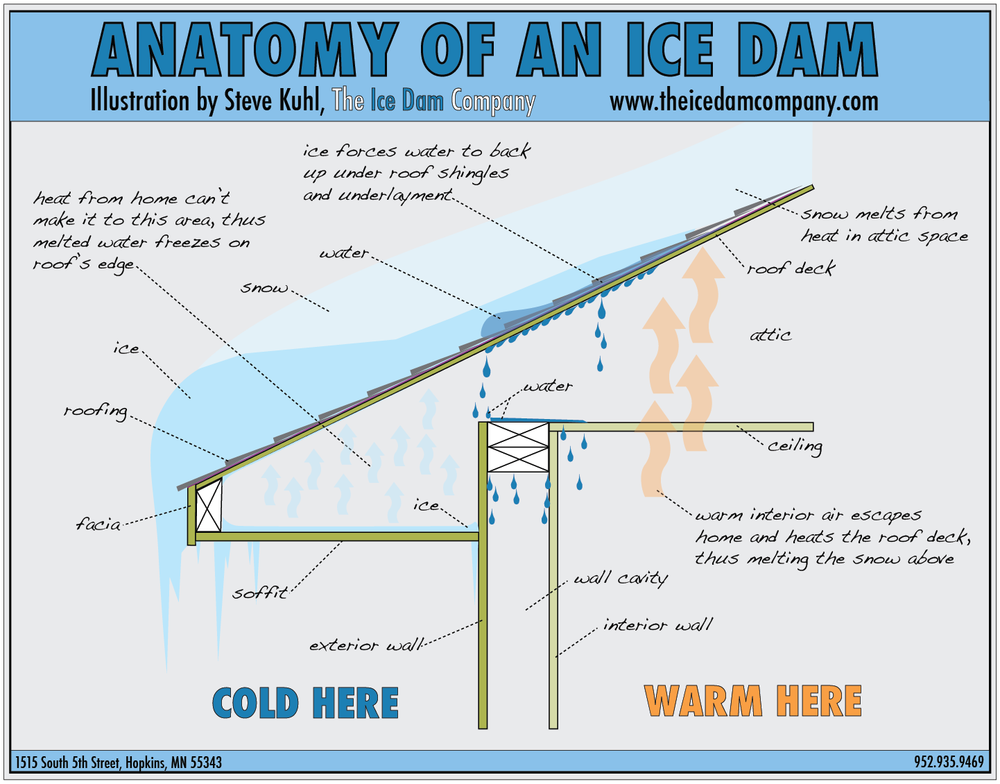It’s cold outside. Really cold. Single digits today with wind chills below zero. It’s the sort of day when the weather people tell you how quickly exposed skin will develop frostbite and warn you to stay inside if you can and bundle up with extra care if you can’t. It’s good advice.
Unfortunately, these are also the days when a lot of homeowners start to notice some “exposures” around their house, as well. Two of the most common problems that homeowners report when the temperatures dip this low arewindow condensation and ice dams. If left unchecked, either one of these can cause damage that’s expensive to repair.
Both problems – condensation on windows and ice dams – are created by fairly complex factors and quick fixes are in short supply. Understanding why they happen is the first step to controlling them.

How Do Ice Dams Form?
Ice dams form when snow collects on a roof and then slowly melts from the peaks downward. As the water from this melting snow runs down the roof, it refreezes in the gutters and along the roof edge. This forms icicles and ice dams. Of course, in order for the snow to melt in the first place, there has to be a heat source. That heat source is almost always a drafty attic with inadequate insulation.
The weight of an ice dam can quickly become enough to rip gutters off a house and even damage the roof structure. Furthermore, water that backs up behind an ice dam can get under the roofing and find its way into walls and ceilings. The potential for costly damages to your home from an ice dam are significant.
The only real cure is seal the drafts and install additional attic insulation. Fortunately, this work can be done anytime of the year. So if you see icicles forming around the edge of your roof, now is the time to do something about it. Don’t try and hold out for spring – call us today and let us install a radiant barrier in your attic and take other steps to prevent the heat loss that leads to ice dams.
Why Does Window Condensation Occur?
The short answer is: warm air meets cold surface, water that was in the gaseous state turns to the liquid state – condensation. Typically, we’ve thought of this as a “bad window” issue. But in fact, even the best modern replacement windows can suffer from condensation when the temperatures outside plummet to single digits and the temperature and humidity inside the house remains constant. The trick is to moderate the amount of moisture inside the house, based on the temperatures outside the house.
Again, that’s an oversimplified answer. I wrote a more detailed explanation of the problems and solutions in response to a question I received from a homeowner. You can read that here.
The important thing to remember is that there are steps you can take to eliminate these problems in your home and stop the damage before it starts. If you’re fighting window condensation or ice dams, give Buresh Home Solutions a call today and let use evaluate the cause and offer a solution.
